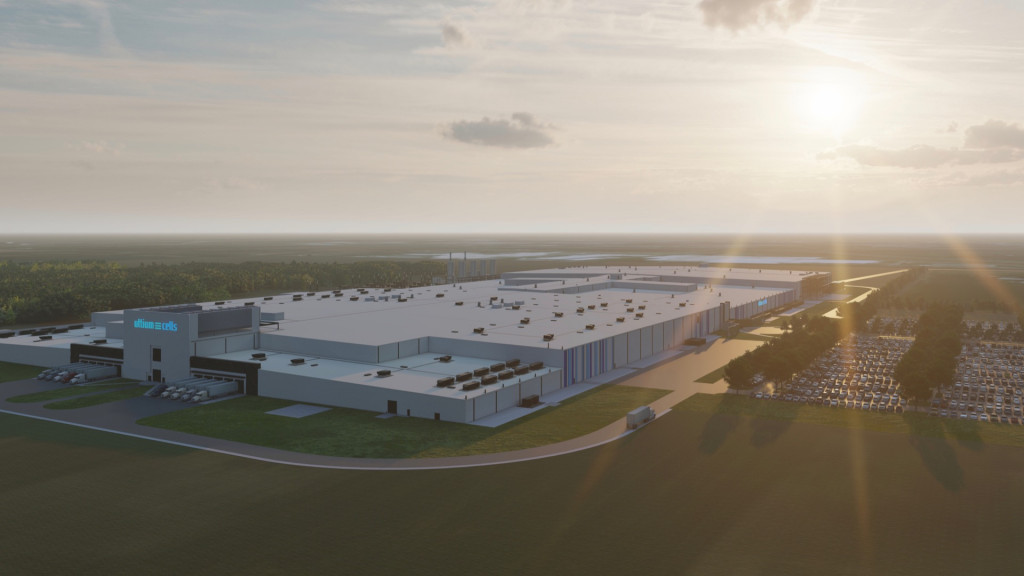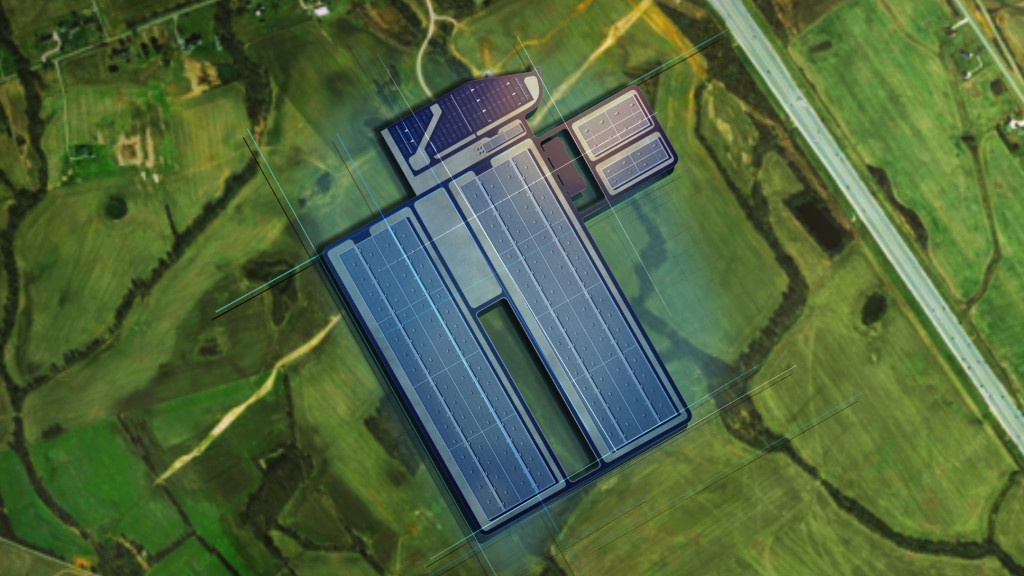The U.S. may produce cheaper EV batteries than China by 2030, in line with a brand new report by evaluation agency Benchmark Mineral Intelligence (through Politico). However that depends upon Biden administration insurance policies undergirding present battery-manufacturing momentum staying in place.
The associated fee reductions are depending on tax credit from the Inflation Discount Act (IRA), in line with the report. The 2022 laws, which Benchmark notes has already led to a “surge” in battery investments, affords a producing tax credit score of as much as $35 per kwh for U.S.-produced cells as much as 2029.
With tax credit taken under consideration, the common value of U.S. battery manufacturing on the cell degree may fall from $118 per kwh immediately to $76.8 per kwh in 2029, in line with analysts, giving U.S. battery factories the “lowest-cost operations globally”—erasing China’s present value benefit and maybe permitting extra exports from U.S. vegetation.

Rendering of deliberate Common Motors Ultium Cells Lansing battery plant
Key to this situation is whether or not the incoming Trump administration continues to put aside funds for battery-manufacturing tax credit. The IRA could have created sufficient jobs to put it aside from being killed outright, however the administration may use any discretionary energy it has below the laws to carry again battery subsidies. Trump reportedly providing to nix EV incentives for a really giant donation from Massive Oil in the course of the marketing campaign.
Even with the tax credit intact, reaching cheaper EV batteries within the U.S. faces further obstacles. Firms could cancel tasks if EV demand would not rise as shortly as anticipated, the report famous. Because the IRA was handed in Aug. 2022, 23 new battery factories have been proposed, which might convey the full variety of U.S. battery factories to 40. However over a 3rd of those new tasks have not begun development, analysts discovered.
The common development time for brand spanking new battery factories in North America can also be 30 months, in comparison with 20 months for China, in line with the report. Unionized workforces and fewer entry to subtle battery supplies additionally makes battery manufacturing dearer within the U.S. than in China, analysts stated. Some value reductions are anticipated as soon as factories are up and operating, although.

Ford Blue Oval Metropolis – rendering of producing advanced in Tennessee, September 2021
But the IRA is boosting the monetary case for making batteries within the U.S., the report emphasised. LG Power Answer stated earlier this yr that IRA tax credit had turned its working earnings from a lack of 235 billion gained (roughly $180 million at present alternate charges) to a revenue of 195 billion gained ($138 million) within the second quarter. And Panasonic reported that tax credit elevated its earnings margin from 7% to 18% for the fiscal yr ending in 2024.
Cheaper batteries make for cheaper vehicles, which may have an even bigger long-term influence on EV adoption than tax credit for car purchases themselves. A latest research by the Stanford Institute for Financial Coverage Analysis (SIEPR) discovered that, whereas IRA tax credit have helped decrease emissions and enhance U.S. manufacturing, they have a tendency to go to individuals who would have purchased an EV anyway and are thus of questionable worth.


